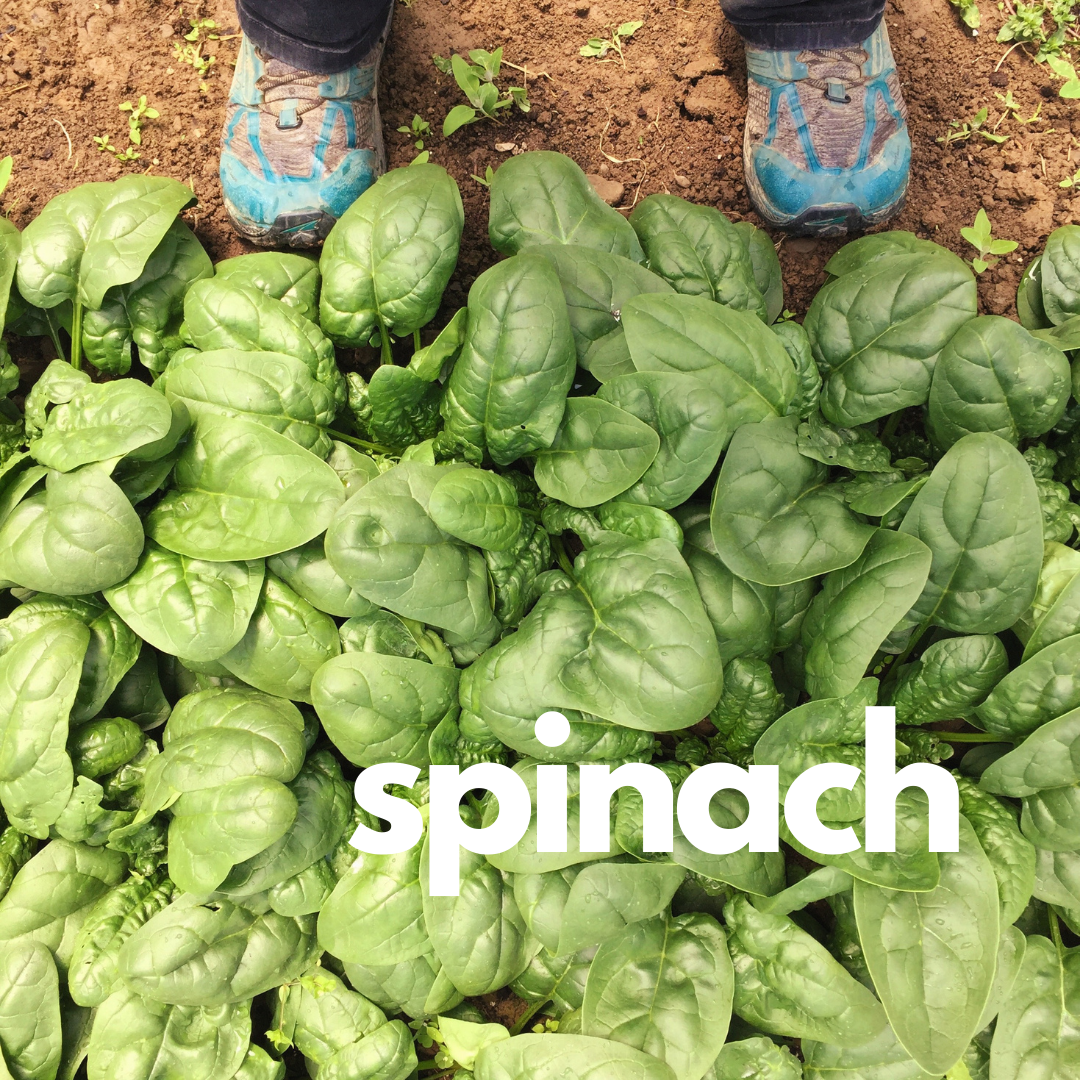How to Identify Spinach in your share:
Dark green leaves, distributed in a small bag. Spinach has a deep, distinctive flavor. We grow a couple different varieties, so there sometimes is significant color variation between the leaves of different varieties.
When it's in Season at Hartwood Farm:
Spring and fall—spinach hates hot weather, so we can really only reliably produce it for the first 1-2 and last 2-3 shares. We have it in all the fall and winter shares, though, and are trying out some more heat-tolerant varieties this year due to popular demand!
Crop Category and What it Tastes Like:
Salad Green! And a cooking green!
Spinach is one of those vegetables that may have had a bad reputation when you were a kid, but now it’s time to realize the delicious versatile goodness of spinach (if you haven’t already). Spinach is tender, earthy, and a bit bitter. It tends not to overpower other things it’s cooked with and makes for a wonderful salad base that lends more flavor than lettuce does.
How to Handle and Store:
It stores best in the crisper drawer in a loosely closed bag. If fairly dry, can keep for a week or two weeks in the fridge. If wet, it gets mushy faster. Spinach shows that it’s reaching the end of its storage life as the leaves start to yellow—quickly toss it into a cooked dish once you start to see this happen!
How to Prep for Use:
Since it grows so close to the ground, we recommend washing well and spinning it out. Some of the more savoyed (wrinkly-leaved) spinach varieties may need an extra wash cycle.
Ways to Cook and Eat:
Very popular raw and in salads, but we strongly prefer it cooked to take off some of the oxalic edge it has. We generally sauté or steam it, and it is compatible with a huge number of dishes across almost every cuisine—you can use it in almost everything from lasagna to soups to sandwiches, to stir fries, its versatility is unending! Can be used as a substitute or interchangeably with chard, as well as some of the cooking greens like kale.
Quick and Dirty Hangry Farmer Go-To Preparations:
Quickly sautéed with eggs, coarsely chopped and added at the end of any stir fry or sauté, in frittatas or quiche, or sautéed on its own in olive, peanut, or sesame oil and topped with seeds or nuts for a simple side dish.
Typical time to:
It’s easy to overcook—watch for it to change color and consistency that indicates it’s done, if you go too long it can get mushy. It’s ready when it becomes bright green.
Steam—2 to 5 minutes
Sauté—2 to 5 minutes
Bake—We don’t recommend; it’s great baked in other dishes, just make sure it’s under other stuff or the leaves will burn
Boil—1 to 4 minutes
Our Favorite Recipes:
Sautéed Spinach (NYT Cooking)— add extra garlic! I use 3-5 cloves when I cook a pan of spinach
Creamy Spinach Pasta (Indian Veggie Delight)— quick, easy, and delicious!

